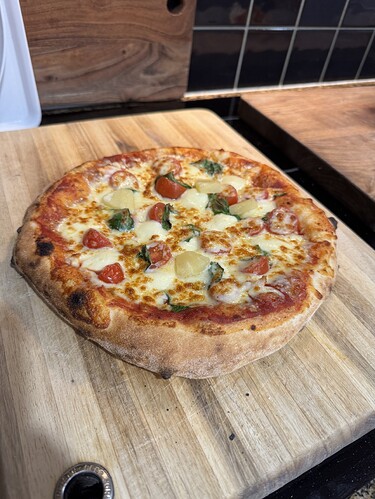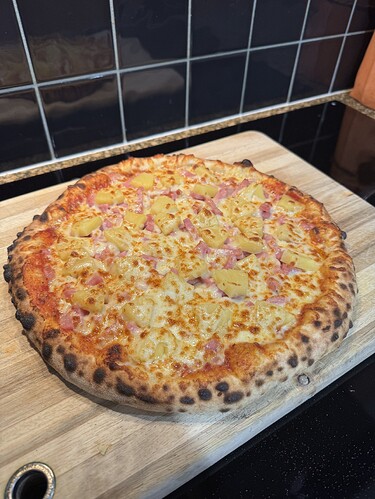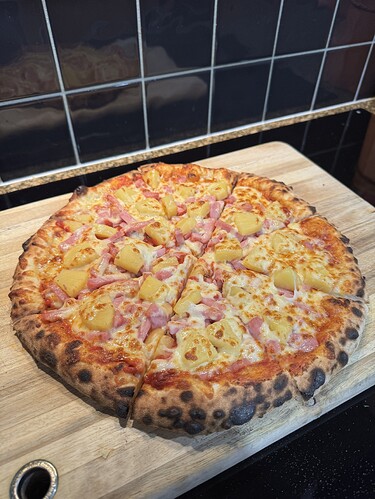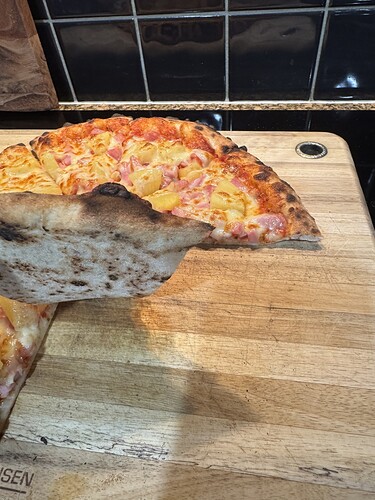There’s a very good reason for that…
It’s under the mussel shells?
That pizza looks like a work of art, not a pizza.
The shells were a bit chewy but I managed to get through it.
Great photo!
we bought one of these a little while ago but got rid of it, was too difficult to regulate the temperature
No vegetarian or marinara options?
Obviously you are tough enough to do that - as someone who has survived the last 20 years of EFC
I think your daughter is drunk
She looks fired up, must be the Coopers.
- edit as C_H noticed.
What did you end up spending your pizza money on?
idk, my folks were the ones who bought it so i have no clue ![]()
those shells would give it some crunch
for the record I don’t mind pineapple on pizza
try tomato base with Parmigiano-Reggiano , la casa formagio mozzarella , good quality ham, pineapple and the kicker is jalepeno
jalepeno and pineapple are made for each other , bit of chilli oil too.
another good one is mortadella , with any sort of runny cheese and pistachios
I think you already told us, but which model? The little portable one?
Yep. The roccbox. Very happy with it.
I could never understand the debate about pineapple on pizza.
Pineapple…
Yet this is modern take is acceptable these days. I mean wtf.

Don’t worry about the garden clippings dropped all over it… more importantly, why is it served on a soiled baby’s nappy?
I always knew that pizza was all about the base.
What I didn’t know, when I got my first pizza oven, was that I was going to learn so much about bread making.
I watched and read a tonne of content on pizza making before starting out, but that was only scratching the surface.
My first challenge was how to reliably get the pizza off the peel and into the oven intact. I’ve learned the difference between the more coarse semolina flour, and the finer ground semola flour. And whether you use a solid pizza peel, a perforated pizza peel, or a wood based pizza peel to launch your pizza. Pro tip: a hardwood or bamboo pizza peel and semola flour are your friends when you’re first learning to launch a pizza. But so are things like making sure there isn’t a drop of sauce or oil on the peel, which will make it stick. And how quickly you can go from pizza base on the peel, to toppings finished and launched, makes a big difference, as the sauce begins to soak through a well stretched pizza base, and a wet base soaks into any flour on the peel too. Giving the peel a shake between toppings helps both settle the toppings in place, as well as stop the base sticking to the peel.
I have learned how much even a little oil (extra virgin olive oil only of course) in the bread can brown the crust so much. I think it’s the key to making oven cooked pizza brown and cook properly.
In the pizza oven, a bread flour and olive oil based pizza needs to be cooked at around 300 degrees, and slowly enough to cook the base through. Whereas a proper pizza flour, a tipo 00 flour, used to make a pizza dough with no olive oil, needs to be cooked at 450 degrees or more, and most or all of that time, the pizza oven needs to be running a higher flame, depending on how many toppings are used
The PizzApp app is a godsend for getting consistent results with various temperatures and timings between when you’re making your base, and when you’re starting to serve it. Once you know what hydration level you like, you can get a consistent base, whether it’s one hour, or 48+ hours until you’re planning to make the base. And when you have the time to proof the bread overnight, or 24 hours beforehand, without Controlled Temperature (refrigeration) proofing, or do a 48 hour plus CT proof, the amount of yeast needed is a ridiculously small amount. Often well under 1 gram. You need accurate scales that will likely have your friends and family wondering how you made your income.
Then there’s the subtlety of how you handle higher hydration dough. With the right technique, a dough that sticks all over your hands, can be made into a perfect ball that doesn’t stick, in seconds.
Most recently, I’ve been learning that how much, or how little you knead makes all the difference for not only whether the dough tears when you stretch it, but also whether it stretches without springing back. And getting the balance right to have a strong gluten foundation, while making sure it’s not so strong that stretching it is too difficult, is an art. And it’s the final piece of the puzzle for me. By the way, the professionals use an expensive spiral mixer to mix their dough and achieve perfection with this balance. Achieving the same without that, takes time, and repetition, and nuance. And pro tip: dough hooks in a mixer make your life harder, not easier. Even if it’s a good mixer.
After all that, here are a couple of more recent efforts:




